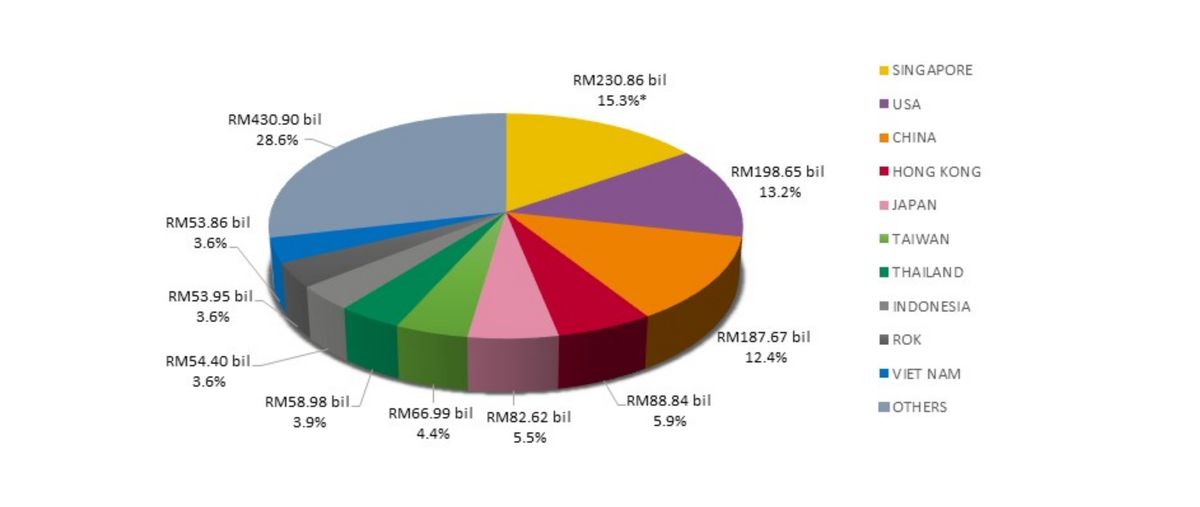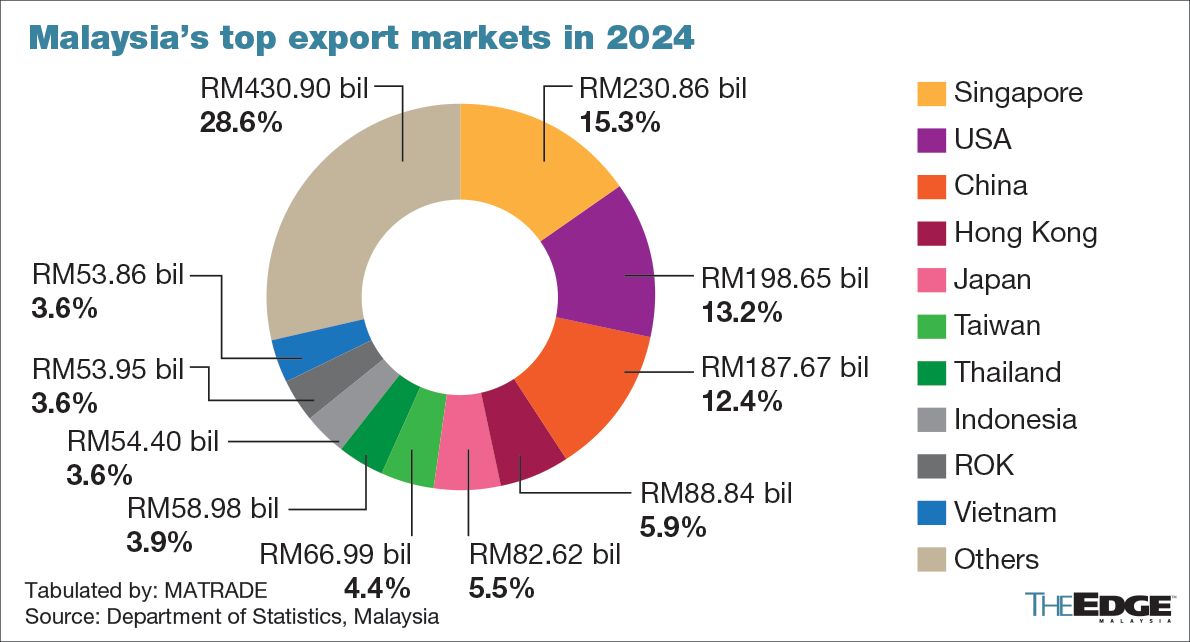
Photo by Patrick Goh/The Edge
KUALA LUMPUR (Jan 3): Economists believe that Malaysia’s exports could benefit from a trade diversion as global firms shift operations in response to President Donald Trump’s announcement of tariffs on major US trading partners, including China.
However, they caution that a potential slowdown in China’s economy due to further tariff hikes could pose risks.
BIMB Securities analyst Maliana Shaharudin said multinational corporations may reroute trade flows to mitigate the impact of the tariffs, potentially using Malaysia as a re-export hub or a more cost-effective alternative.
However, she highlighted concerns over the slowdown in demand for electrical and electronics (E&E) products in China, which could be exacerbated by the US tariffs. Higher costs may lead to reduced orders from suppliers, including Malaysia.
“US tariffs on China pose indirect risks to Malaysia's exports that could weigh on the E&E sector. The slowdown in E&E demand could also lead to a reduction in Malaysia’s exports to the country, given the cyclical nature of Malaysia’s E&E exports,” she told The Edge when contacted.
Malaysia plays a critical role in the global E&E supply chain as the world’s sixth-largest exporter of electronics and semiconductors. For context, the country accounts for 7% of semiconductor trade flows and 13% of global back-end operations, including chip testing and packaging.
In 2024, China was Malaysia's third-largest export market, contributing 12.4% to the country's total exports, which were valued at RM1.51 trillion. It was behind Singapore (15.3%) and the US (13.2%), according to data from the Department of Statistics Malaysia, compiled by the Malaysia External Trade Development Corporation.
BIMB, however, remains cautiously optimistic about Malaysia’s trade outlook, projecting goods export growth of 3.9% and import growth of 4.5% in 2025, driven by resilience in export-oriented industries and opportunities emerging from global supply chain realignment, according to Maliana.
The research house also anticipates the revival of re-exports of 5.7% this year amid trade diversion effects, she said.
Trump’s tariff plan focuses on countries with which the US has significant trade deficits. In addition to the tariff on Chinese goods, the plan also includes a 25% duty on all imports from Mexico and Canada, which could take effect on Tuesday. However, the full extent of the tariffs remains uncertain, according to news reports.
In response, Canada and Mexico have announced retaliatory measures, while China has vowed to challenge the tariffs and implement unspecified countermeasures. Further, Trump has also hinted that the European Union could be the next target.
Sunway University Business School professor of economics Dr Yeah Kim Leng said that while the 10% tariff on Chinese goods may have a limited impact on China’s exports to the US, further tariff hikes could shave 0.1 to 0.2 percentage points off China’s projected 4.6% gross domestic product (GDP) growth in 2025.
“China has mounted a sizeable fiscal stimulus to boost domestic consumption and address housing sector woes while redirecting its export focus away from the US economy in anticipation of an escalation in trade and technology conflict with the Trump administration. Further tariff hikes could impact China’s economy.
“Unless China's growth is halved, the impact on the Malaysian economy is expected to be slight to moderate. However, a wider trade war pursued by Trump against key trade partners will inflict much damage on the global economy, particularly in terms of slower growth and higher inflation,” said Yeah, who is also deputy president of the Malaysian Economic Association.
UOB Global Economics and Market Research senior economist Julia Goh, meanwhile, said she does not rule out the possibility of the tariffs being reversed if the economic and inflationary fallout proves significant.
Goh, however, maintained export growth projection at 4.5% for 2025, noting that it is still too early to assess the full implications of the tariffs.
“Trump’s proposed tariffs appear to be more serious this time. While these tariffs may help other countries that are not tariffed (yet), we think it could be a matter of time, pending the trade investigations that Trump has initiated,” she added.
Meanwhile, OCBC senior economist Lavanya Venkateswaran commented: “The impact of tariffs on China may be more pronounced in terms of a near-term drag on growth, but the offset is that FDI (foreign direct investment) inflows from China into Asean (including Malaysia) will continue. Hence, we are maintaining our 2025 GDP growth forecast of 4.5% year-on-year.”
- China suppliers mock tariffs with Nike, Lululemon deals on TikTok
- Malaysia declares state funeral for Tun Abdullah Ahmad Badawi
- Reach Energy, Cahya Mata, Able Global, Pestec, Bina Puri, Jentayu Sustainables
- Tariff shock awaits China after trade surplus hits US$103 bil
- Nvidia to produce AI servers worth up to US$500b in US over four years


